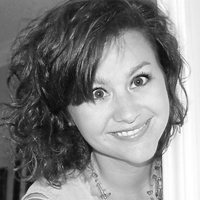Question
Once a deficit in vocabulary has been established for a student, how do I decide which vocabulary words to address?
Answer
Beck, McCowen & Kucan (2002) conceptualized vocabulary into three tiers that are helpful in guiding us towards which vocabulary words to teach. Tier one words are basic words that are often learned through conversation and shouldn't require much explicit instruction. These are common nouns, verbs, and concepts like chair, boy, and run. Tier two words are words that appear across the academic curriculum and can show up in many different contexts. These are words such as, subordinate, abundant, and precious. Tier three words are very subject-specific terms that are generally used in only one context and have one specific meaning. Good examples of that are hypotenuse, amoeba, and isthmus.
Reading passages on state standardized tests are generally populated by tier two vocabulary and are words that students are most likely to encounter in reading assignments across the curriculum. Teaching tier two words prepares students for those standardized reading tests. However, students of low socioeconomic status and low language environments, need direct instructions for tier-one vocabulary, especially K-2nd grade, and even 3rd grade. It's not just a “show me the chair kind of task,” rather it is assessing how deeply they know the word. I currently have many students that I am teaching a series of tier-one vocabulary.
Interestingly, there is really no generally agreed upon list of tier one words. However, there are words that appear in print more frequently, like a reading list, and there are words that are more commonly spoken, which is more of an oral language list. There is usually an overlap between those two. Therefore, the best approach is to create your own list because there isn't one that is agreed upon in the research.
Creating your own lists of vocabulary words allows you to be creative. One idea is to create lists that are organized around early basic themes. For example, words that go with the theme of zoos, farm, school, kitchen, playground, pets, and ocean. The words aren’t necessarily all nouns nor should they be because those are not the only words that students need.
I have a short reference test that I do to check off how many semantic features the student included in his/her explanations of the words. Being methodical in how you approach therapy can help keep you focused, it helps the student track his/her progress, and it also helps with IEP goals and progress monitoring. Again, I'm asking for more than just, “Point to the car.” Or, “What is this?”
My ultimate goal is to build a bridge for the use and understanding of words across four types of vocabulary: listening, speaking, reading, and writing. It’s important to share these types of vocabulary with teachers.
- Listening Vocabulary - This is the largest group and is made up of words we hear and understand.
- Speaking Vocabulary – These are words we shouldn’t have to search for. They are words that should come easily to us and we use fairly often.
- Reading Vocabulary – These are words that we understand when we read them, but we rarely speak them. The word reticent is a good example. That is not a word we would often use while speaking, but we will likely encounter it during reading. This type of vocabulary is not going to be very large if you aren’t a strong reader.
- Writing Vocabulary - These are words we think of while writing. This is also the smallest of the vocabulary type because it combines spelling, handwriting, and syntax. Most of the words we write come from our speaking vocabulary. But going back to spelling, spelling interferes with our writing vocabulary. Here is an example. Have you ever had a word that you have struggled to spell, so you either used a completely different, easier word instead? Students will do the same thing. However, every word in our writing vocabulary is extremely important when trying to convey a clear and accurate meaning.
Please refer to the SpeechPathology.com course, Supporting Children of Poverty: Special Considerations for the School-Based SLP for more information on how and why poverty has a tremendous impact on both language learning and academic success.

